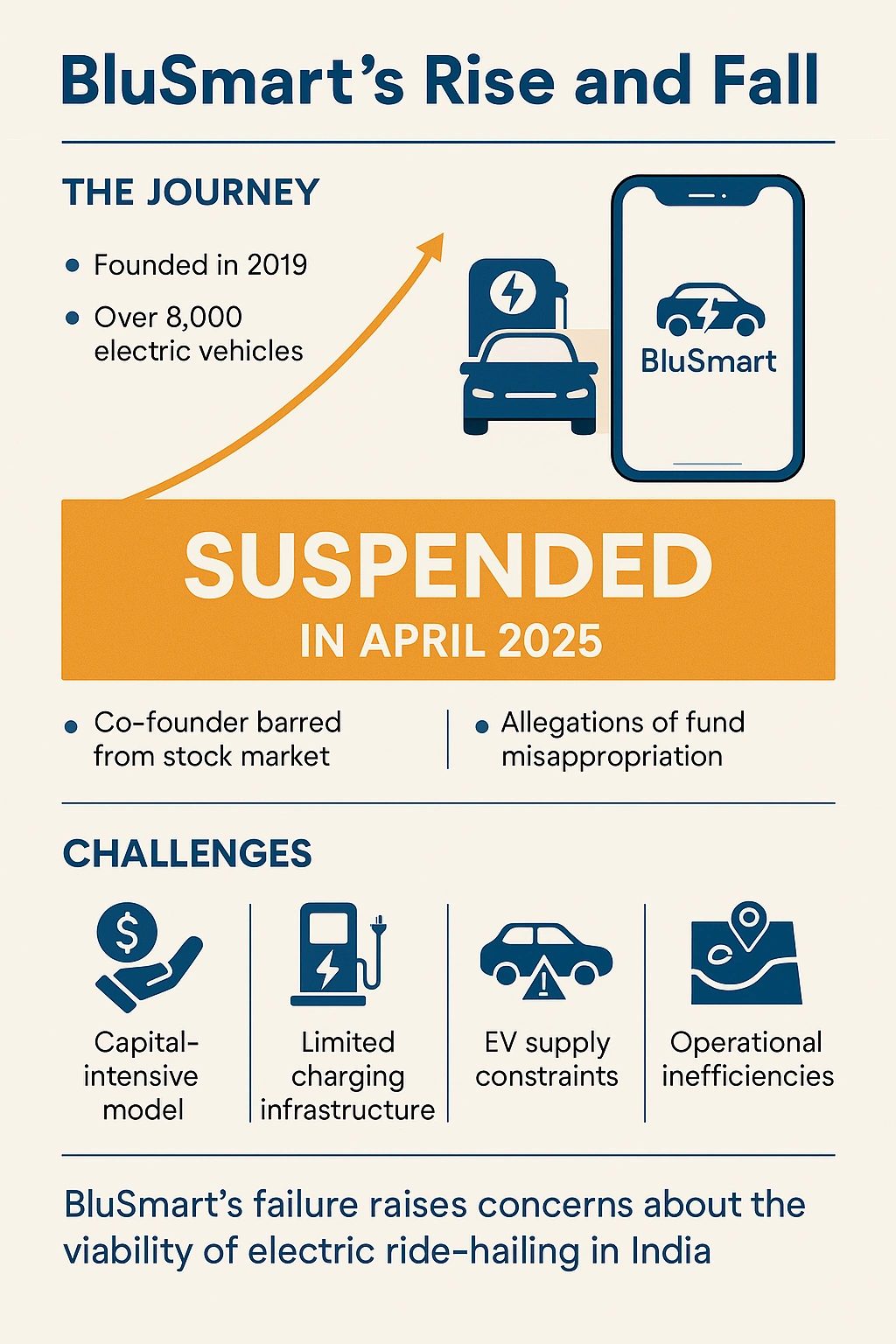In a dramatic turn of events, BluSmart, once hailed as India’s pioneering all-electric ride-hailing service, has suspended its operations. This development not only disrupts the lives of thousands of drivers and customers but also casts a shadow over the country’s ambitious electric vehicle (EV) goals. The downfall of BluSmart underscores systemic challenges within India’s EV ecosystem, highlighting issues that extend beyond a single company’s missteps.
The Rise and Fall of BluSmart
Founded in 2019, BluSmart emerged as a promising alternative to traditional ride-hailing giants like Uber and Ola. With a fleet of over 8,000 electric vehicles (EVs) and operations concentrated in Delhi NCR and Bengaluru, the company aimed to revolutionize urban mobility by offering zero-emission rides. BluSmart’s model, which involved owning its fleet and establishing dedicated charging hubs, was seen as a bold move towards sustainable transportation.
However, the company’s ambitious trajectory came to an abrupt halt in April 2025. The Securities and Exchange Board of India (SEBI) barred co-founders Anmol and Puneet Jaggi from the stock market, citing allegations of fund misappropriation. Investigations revealed that funds intended for EV procurement were diverted for personal luxuries, including a $5 million apartment and other expenses . This scandal not only tarnished BluSmart’s reputation but also led to a suspension of its services, leaving drivers jobless and customers in limbo.
Systemic Challenges in India’s EV Ecosystem
BluSmart’s collapse is symptomatic of broader issues plaguing India’s EV landscape:
-
Capital-Intensive Model: Unlike asset-light competitors, BluSmart’s strategy of owning its fleet and infrastructure required significant capital investment. This approach led to frequent fundraising rounds and mounting financial pressure.
-
Charging Infrastructure Deficit: Despite establishing 50 charging hubs, utilization rates remained low, averaging around 22%. This underutilization hindered profitability and highlighted the challenges of scaling charging infrastructure.
-
EV Supply Constraints: BluSmart faced difficulties in expanding its fleet due to limited EV production capacity among manufacturers. This bottleneck affected the company’s ability to meet growing demand .
-
Operational Inefficiencies: The company’s hub-to-hub model, while innovative, restricted spontaneous bookings and limited service flexibility compared to competitors .
Implications for the EV Industry
BluSmart’s downfall sends ripples across the EV sector:
-
Investor Confidence: The scandal may deter potential investors, making it harder for EV startups to secure funding.
-
Policy Reevaluation: Regulators might reconsider subsidies and incentives, emphasizing stricter oversight and accountability.
-
Market Dynamics: Competitors may reassess their strategies, balancing growth ambitions with sustainable practices.
Lessons and the Road Ahead
BluSmart’s experience offers valuable insights:
-
Governance Matters: Robust corporate governance and transparency are crucial for building trust and ensuring long-term viability.
-
Scalable Models: Adopting asset-light models or hybrid approaches might offer better scalability and financial sustainability.
-
Infrastructure Investment: Collaborative efforts between the government and private sector are essential to develop widespread and efficient charging infrastructure.
-
Diversified Strategies: Companies should diversify their services and revenue streams to mitigate risks associated with a single business model.
Conclusion
BluSmart’s suspension serves as a cautionary tale for the EV industry. It highlights the importance of sustainable business models, strong governance, and the need for systemic support to foster a resilient EV ecosystem in India. As the country strives towards its electric mobility goals, stakeholders must learn from BluSmart’s experience to build a more robust and inclusive future

